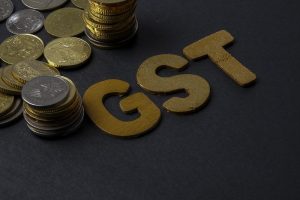
In yet another plea to improve the intricacies under the Goods and Services Tax (GST) regime, financial experts and industry leaders have approached the government, proposing a series of sweeping reforms aimed at easing the bottlenecks for the industry, particularly with regard to the Input Tax Credit (ITC) framework.
The move comes amid widespread concerns about mounting credit accumulation and liquidity constraints faced by businesses under the current GST system, which has been impacting business liquidity, said sources familiar with the development.
“The current system has created substantial working capital challenges for businesses across sectors, prompting calls for immediate intervention,” said sources quoting the representations, which have been submitted to the revenue department at the Finance Ministry.
Also, as part of these representations, there are recommendations “seeking a comprehensive review of the ITC mechanism, with the aim to address structural bottlenecks that have stifled working capital efficiency across sectors. Key issues identified include mandatory cash payments under the Reverse Charge Mechanism (RCM), the inability to transfer credits between different branches of the same company, and the lack of a streamlined refund process for unutilised ITC,” sources added.
Industry claims that “businesses are facing ITC accumulation due to multiple factors, including the absence of corresponding outward supplies, mandatory cash payments under the Reverse Charge Mechanism (RCM), and restrictions on transferring accumulated ITC between distinct entities. These issues have particularly impacted companies in their early stages and those with high capital outlays,” said sources.
Key reforms proposed by industry
One of the most significant proposals calls for allowing businesses to use their accumulated ITC to discharge RCM liabilities. Under the current regime, companies must pay such taxes in cash, even when they possess sufficient input credit. Experts argue that this places unnecessary financial strain on businesses, especially those in capital-intensive or early-growth stages.
In a move widely welcomed by corporates, the reform package also proposes enabling the transfer of IGST and CGST credit balances between distinct persons under the same PAN—such as separate registrations of a company across different states. “Industry leaders believe this would optimise credit utilisation and improve overall business efficiency,” said sources.
Addressing long-standing industry demands
The review also calls for expanding the refund formula applicable to inverted duty structures to include ITC on input services. Currently, only inputs (goods) are eligible for such refunds, leaving service-heavy industries at a disadvantage.
Perhaps the most innovative suggestion is the creation of a mechanism to convert accumulated ITC into marketable scrips or tradable credits. This approach, similar to carbon or export scrip models, would allow businesses to monetise unused credits, thus unlocking much-needed liquidity without breaching GST compliance.
Implications for exporters and economic growth
Export-oriented businesses are expected to benefit significantly from the proposed changes, particularly through lower production costs and improved international competitiveness.
“These reforms could enable exporters to reinvest capital and expand globally, thereby positioning India more strongly in global trade,” said a prominent export association official.
Source: CNBC TV-18


